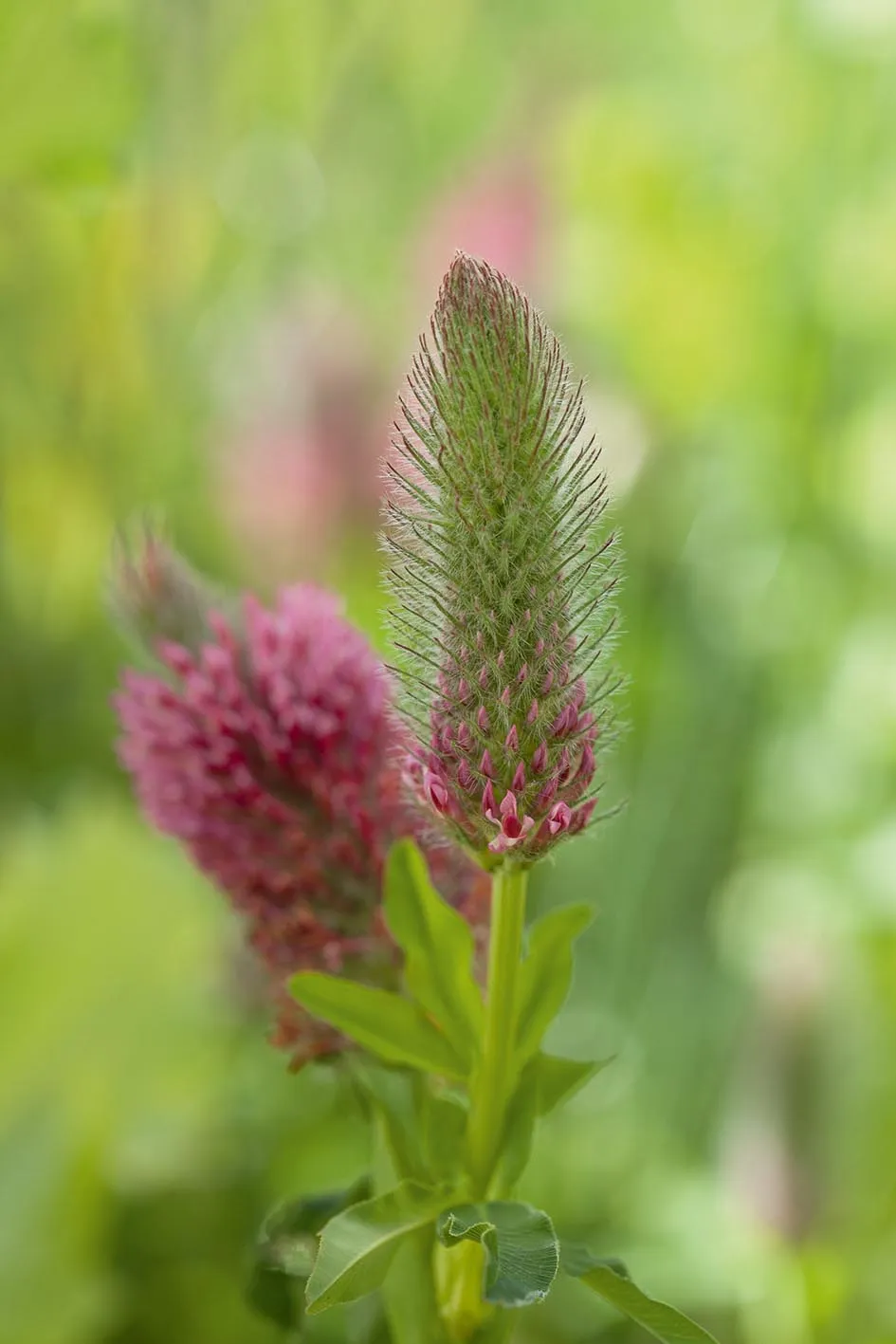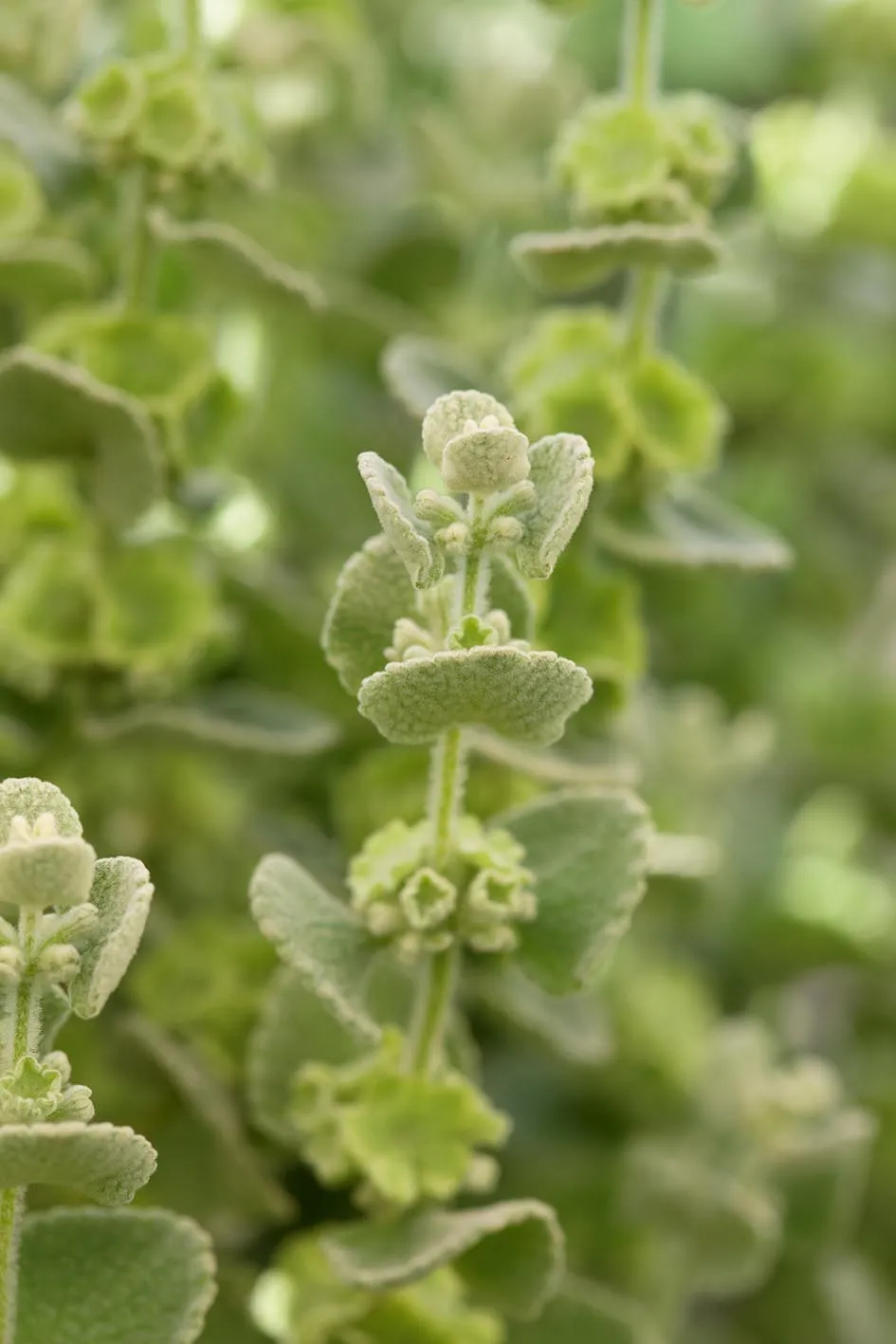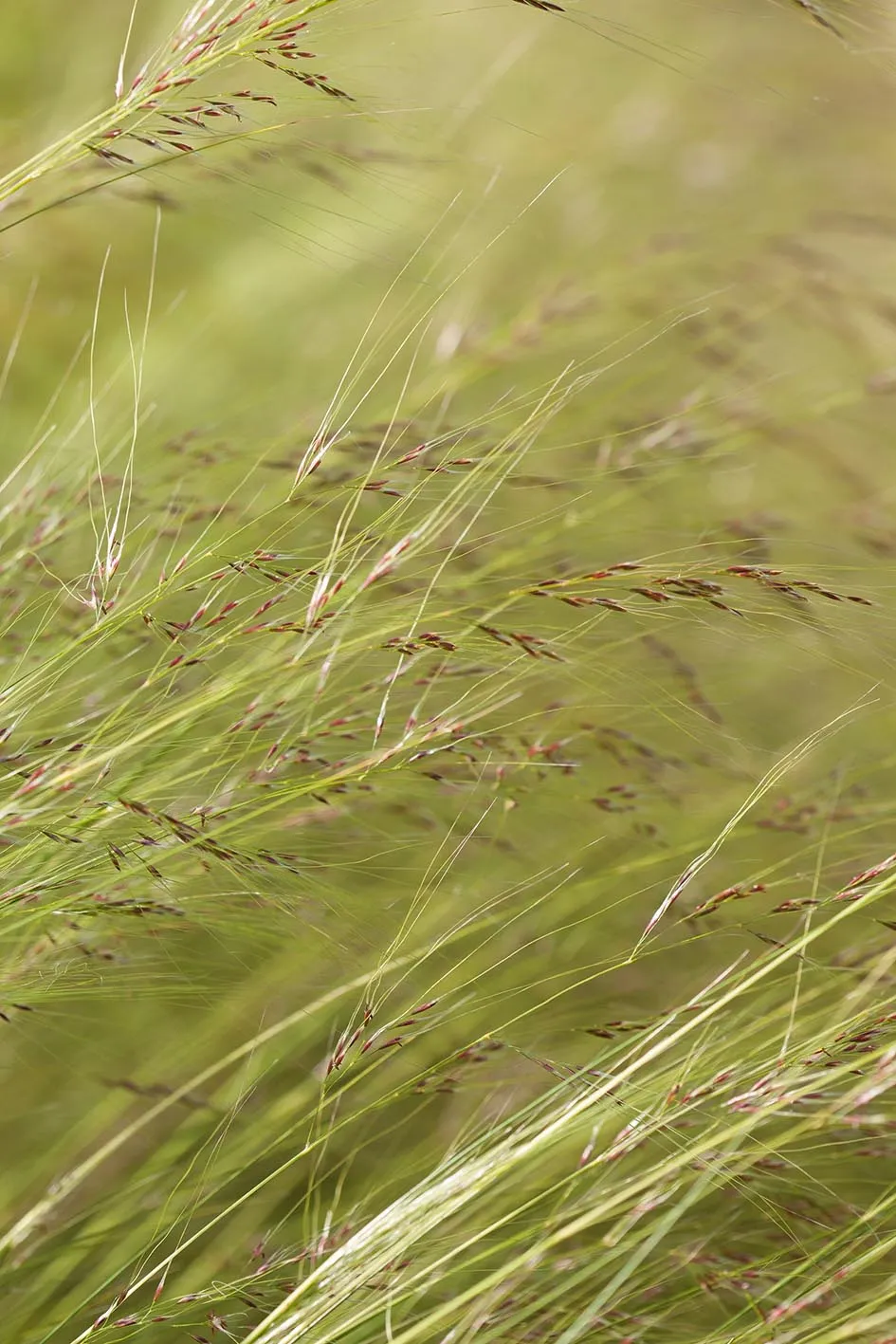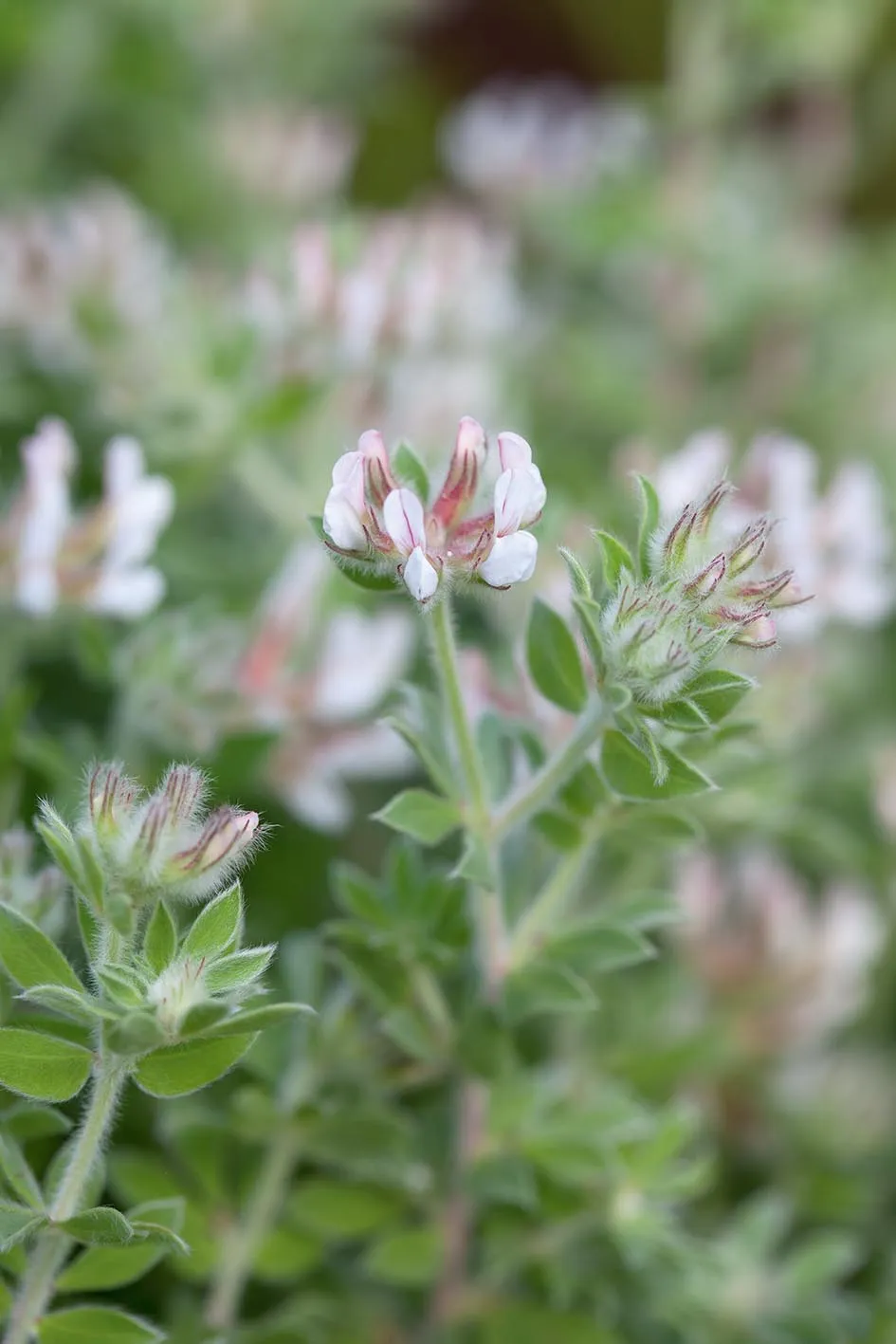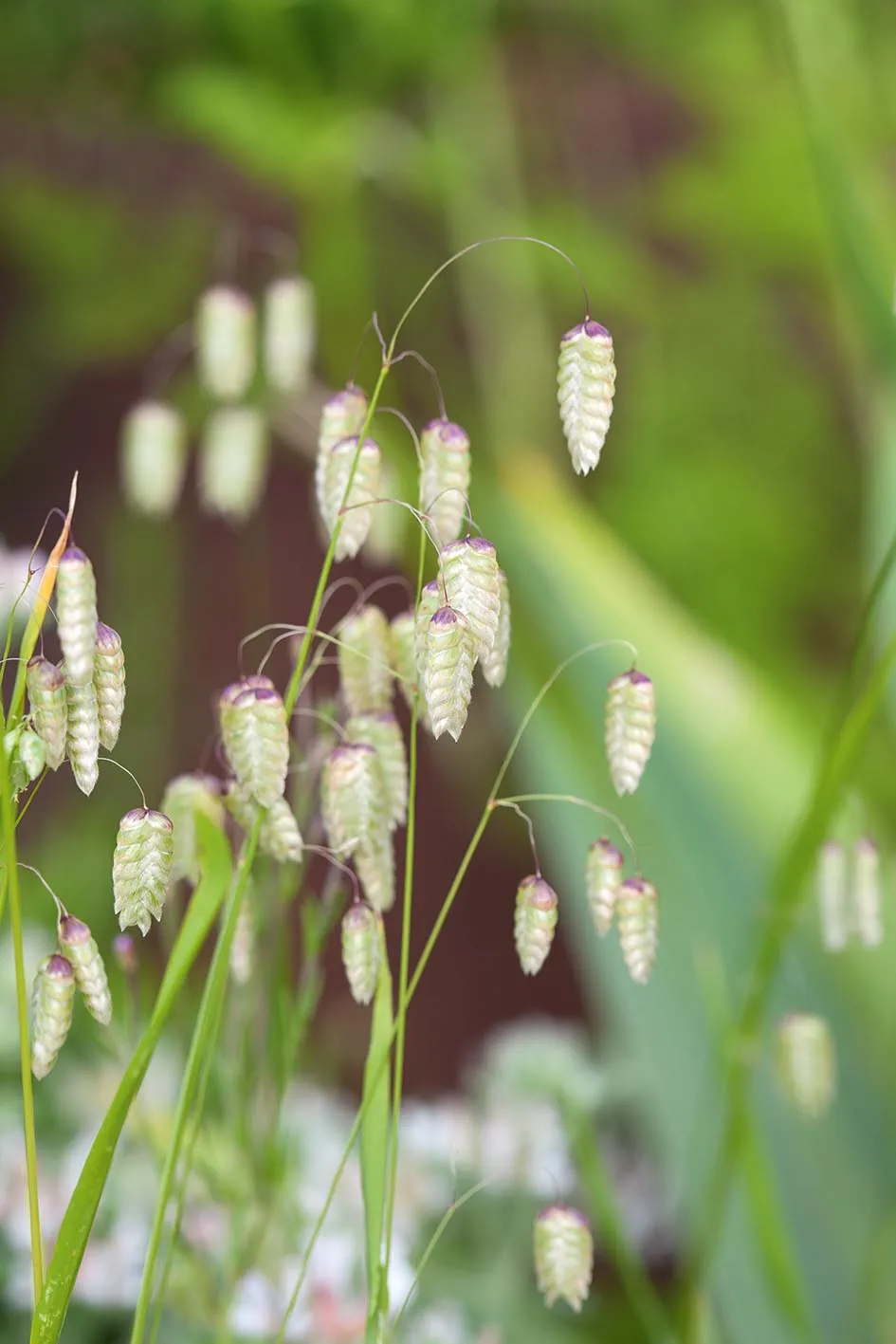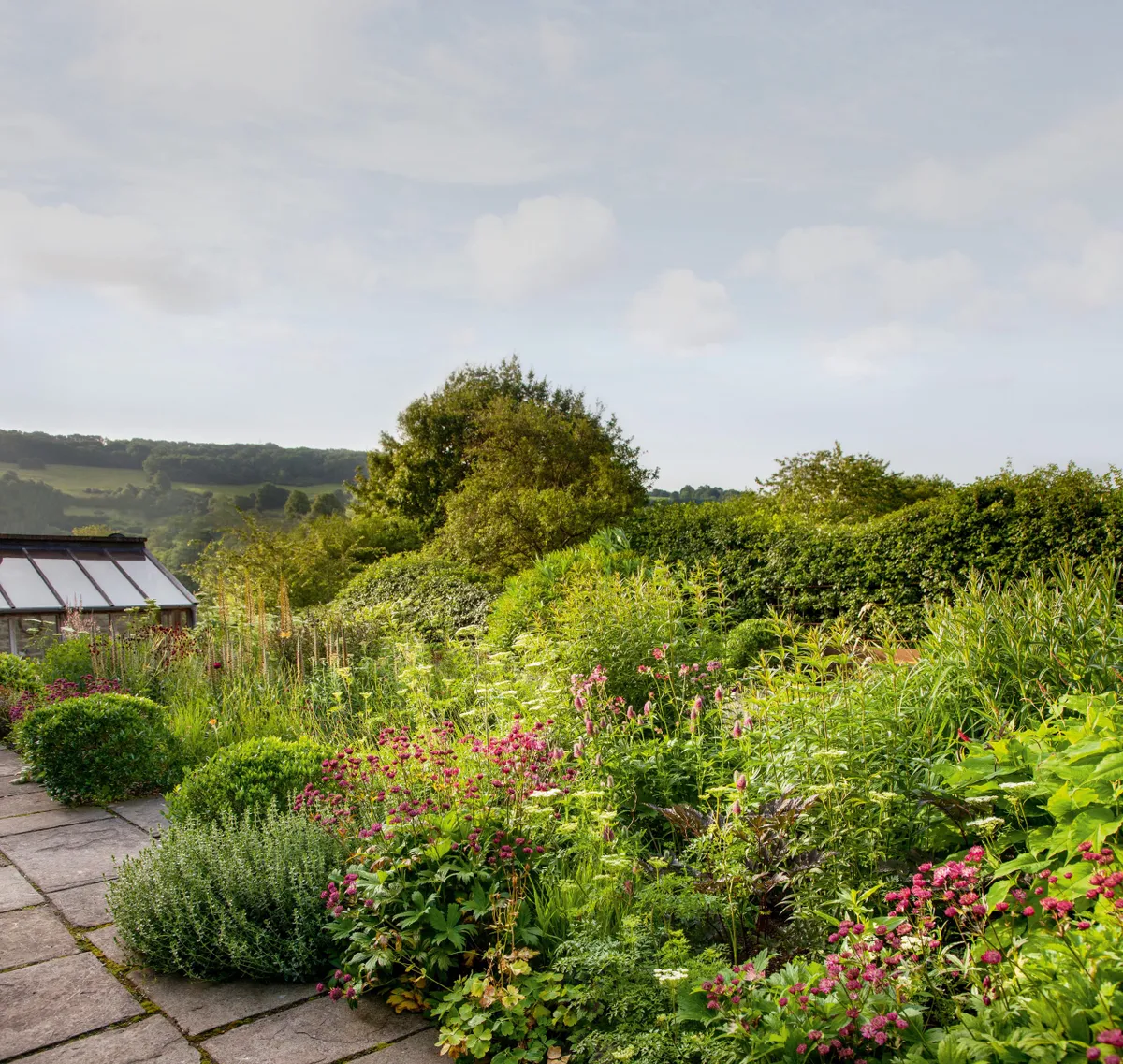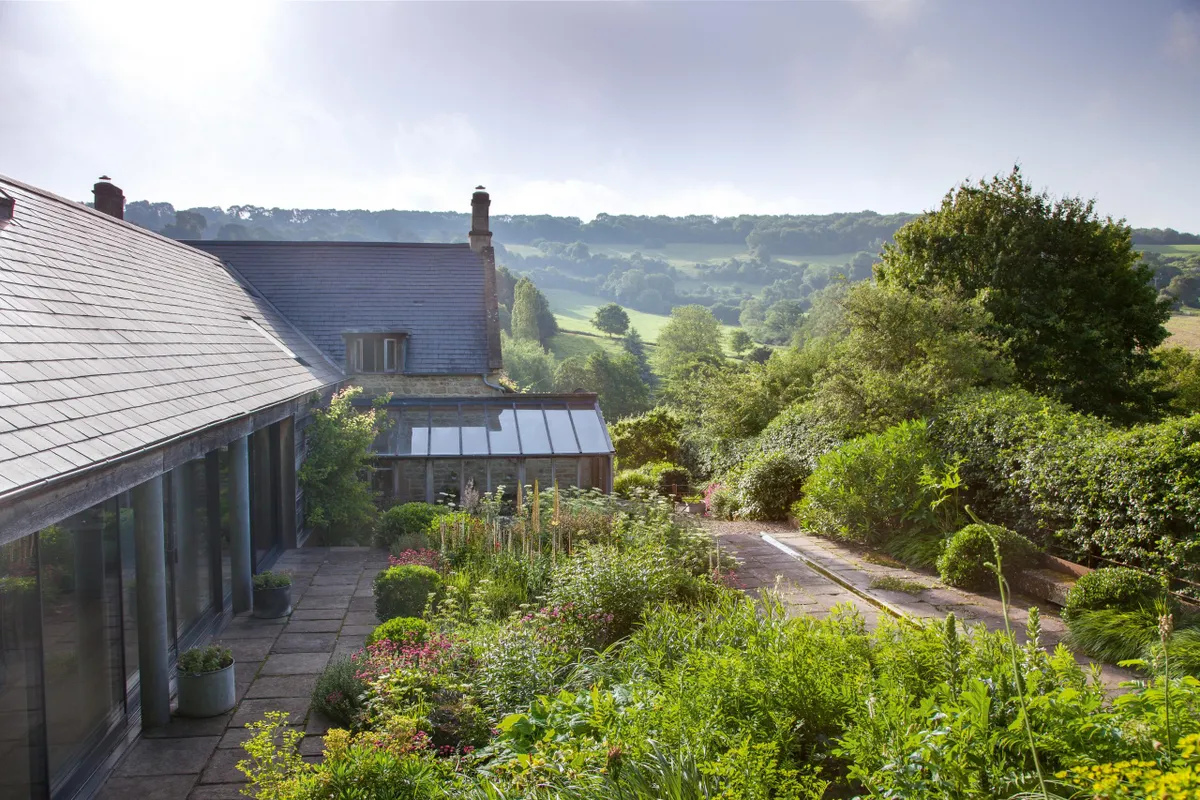Visiting someone else’s garden is source of both pleasure and inspiration, seeing how another gardener expresses their own vision and responds to a particular location and setting. Having crossed paths at plant fairs, conferences and nurseries with designer and horticulturist Alison Jenkins it is great finally to visit the Cotswold home she shares with sculptor Patrick Haines. The approach to the house is exciting in itself: a narrow winding lane along St Catherine’s Valley, a deep cut and wooded limestone valley just outside Bath. The double fronted stone elevation appears set back from the lane in clouds of informal plantings, a teasing view of horticultural artistry for passers by: clouds of white Ammi umbellifers intermingled with the rich plum of poppies and Erysimum ‘Red Jep’, copper grasses and the beautiful apricot tones of Oenothera stricta ‘Sulphurea’, a desirable evening primrose.
Alison and Patrick are increasingly preoccupied with questions of what it means to garden in the face of a global climate emergency. What species will thrive in a climate that is warmer and more prone to extreme storms and droughts? How should we balance ornamental with productive gardening? What is a low-impact garden? How can we restore the health of depleted soils? What role is there for our gardens in reducing species and habitat loss? These questions are changing Alison’s way of gardening. She has become more resourceful, using mole dirt to bulk up home-made compost, for example, to avoid a car trip to the garden centre and more unrecyclable plastic sacks. Her hedgerows are rich in free and sustainable resources such as coppiced hazel poles, and nettles and wild garlic for soup.
"Knowing about the soil your salad has grown in might sounds like a small thing, but it really matters to the way you think about the world,” she says. Eager to connect people and share knowledge, she invites specialists into her home and holds workshops on composting, making growing structures with willow and boosting soil fertility through bokashi, a traditional Japanese way of fermenting food waste. It’s about sharing ideas and experiences in person, and visiting inspiring garden like New House Farm. You can see more of Alison's garden below.
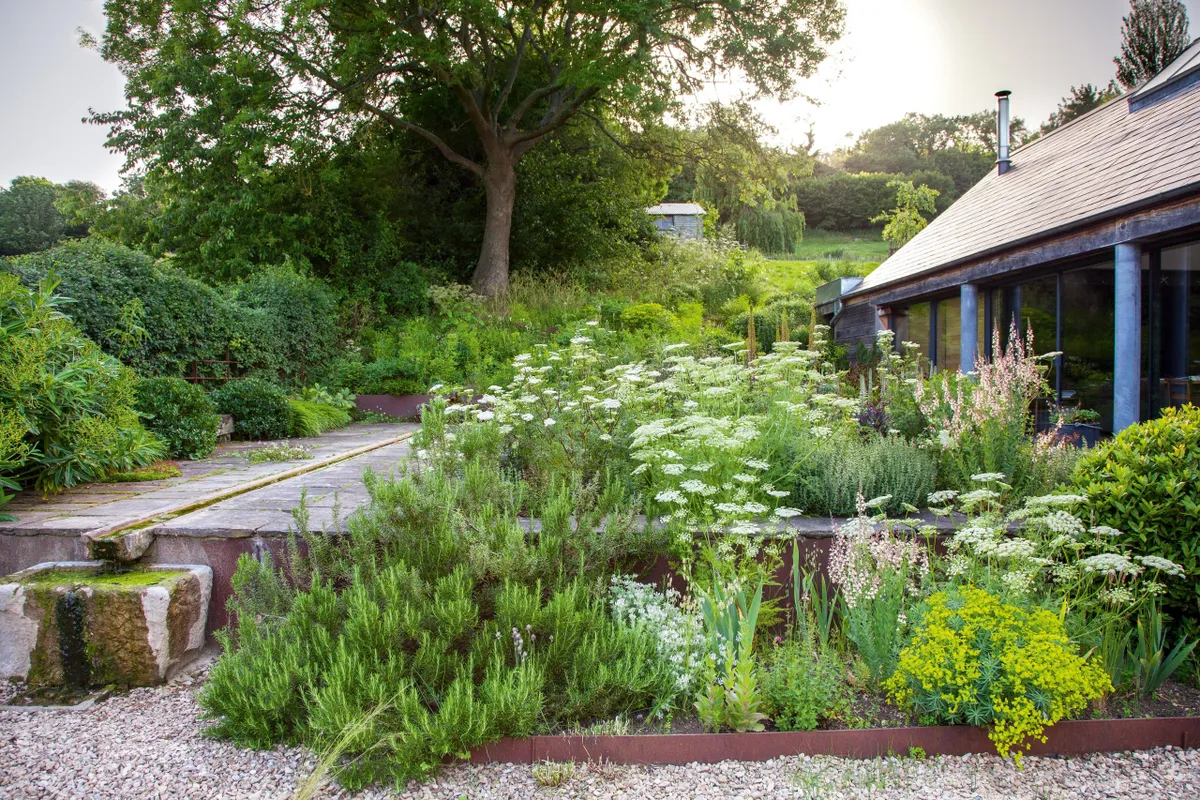
Beyond the shade of a mature ash tree, sun lovers thyme, Lotus hirsutus and the self-seeding, monocarpic Ligusticum lucidum intermingle. The exceptionally long flowering Euphorbia seguieriana subsp. niciciana forms a massed froth of acid-yellow flowers that offset the deep greens of Phillyrea latifolia, Phillyrea angustifolia f. rosmarinifolia ‘French Fries’ and rosemary. These loosely clipped green forms act as visual anchor points to the more ethereal perennials that appear almost to float above the planting.
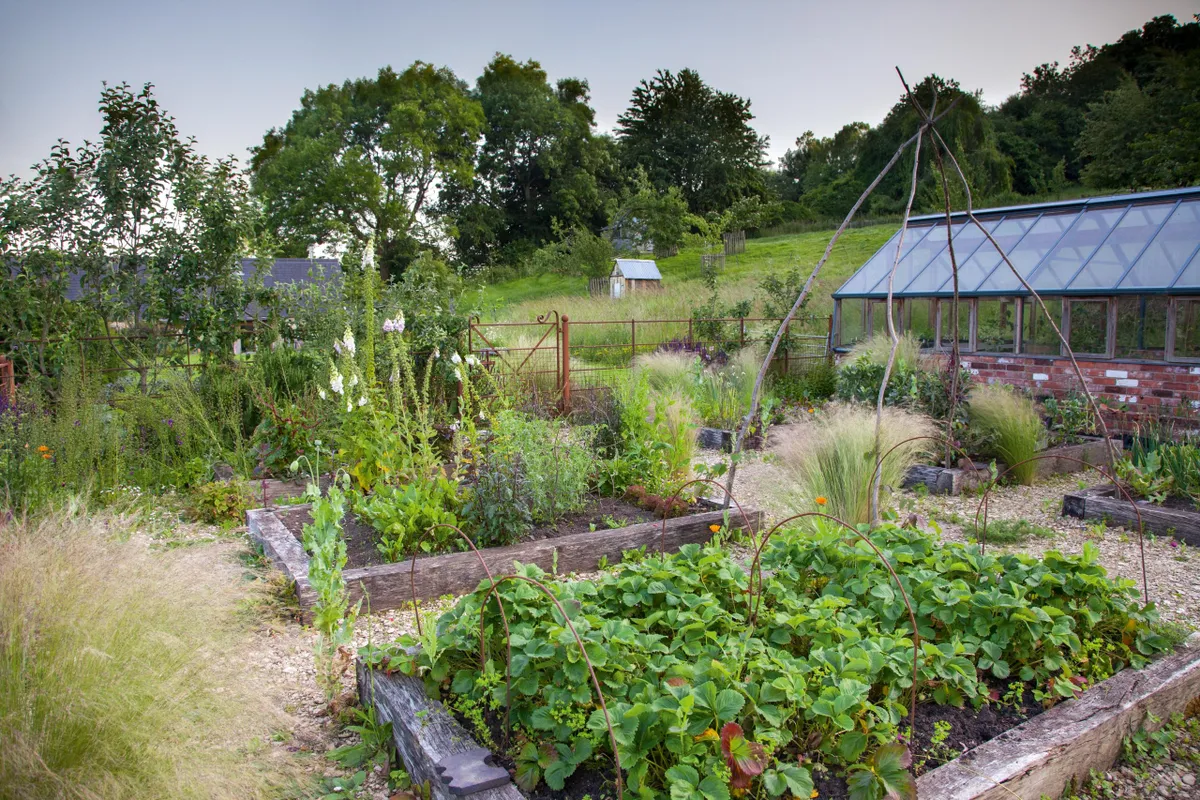
In Alison’s productive garden, raised beds provide space for cultivated crops, such as strawberries, but beauty as well as productivity is important with foxgloves and other ornamental plants growing among the edibles, and the grass Stipa tenuissima joined by poppies in the gravel paths.
Key plants in Alison Jenkins' garden
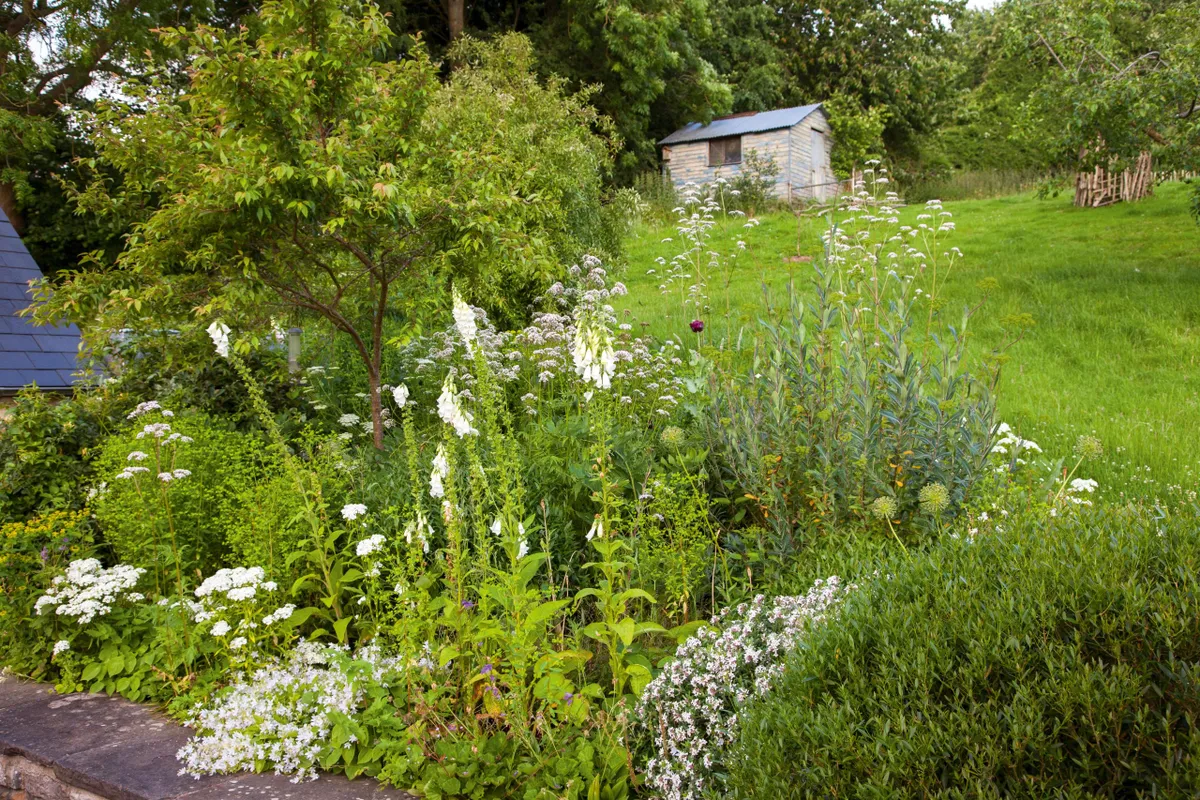
Small foreground trees, such as this Prunus x subhirtella ‘Autumnalis’, echo the undulating forms of trees along the horizon, making it hard to decipher where the garden ends. Informal plantings of Dianthus barbatus ‘Albus’ and foxgloves, create a visual transition to the meadow beyond.
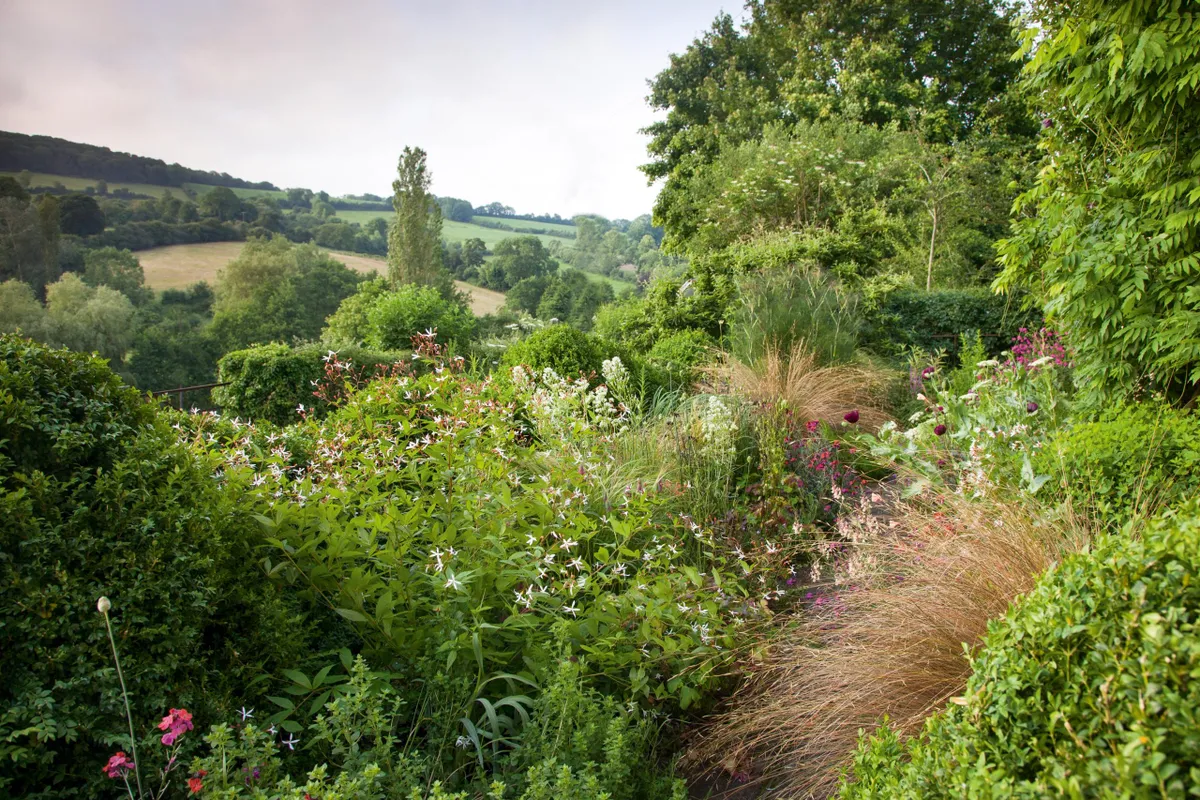
The clean, white starry flowers and airy texture of Gillenia trifoliata, offset the rich, deep tones of the red wallflower Erysimum ‘Red Jep’, the poppy Papaver somniferum ‘Lauren’s Grape’ and the bronze evergreen sprays of the red tussock grass Chionochloa rubra.
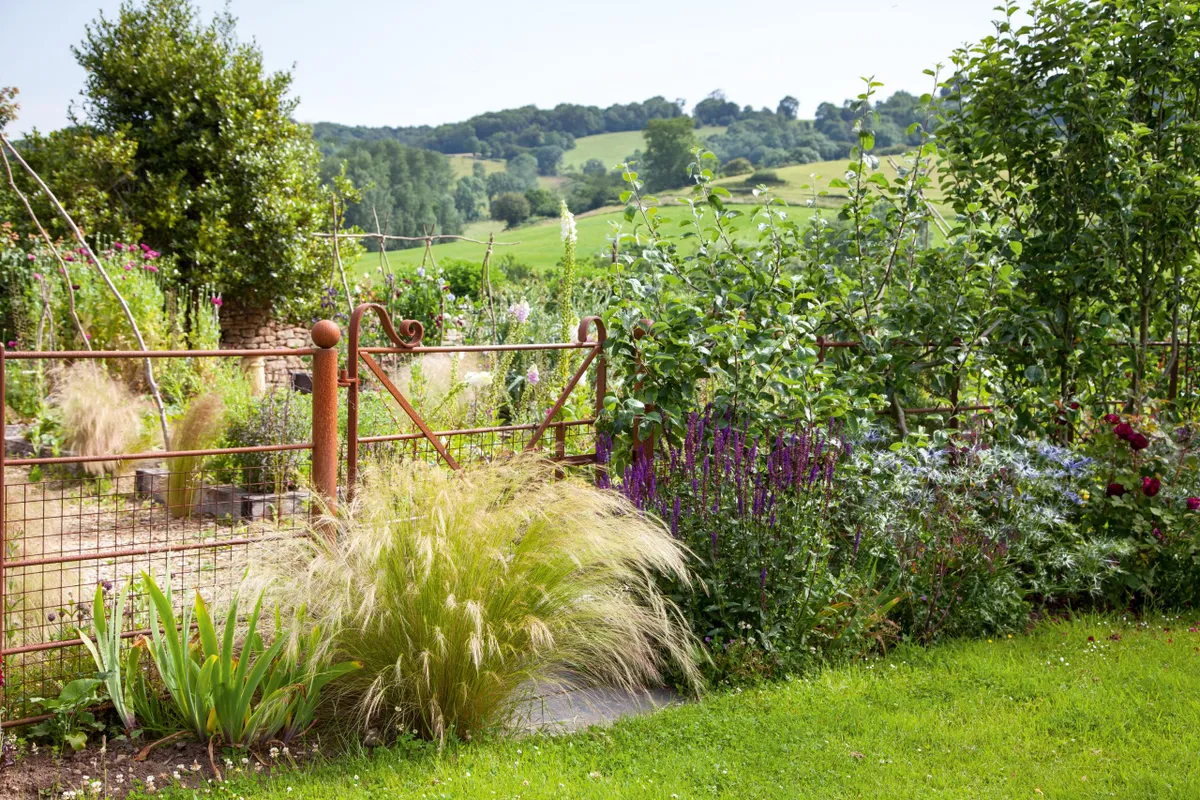
Verbascum phoeniceum ‘Violetta’, foxgloves and poppies lightly self-seed around the productive garden. Stipa tenuissima, Salvia nemorosa ‘Caradonna’ and Eryngium alpinum are encouraged to settle around the fringes forming visual link to nearby ornamental plantings.
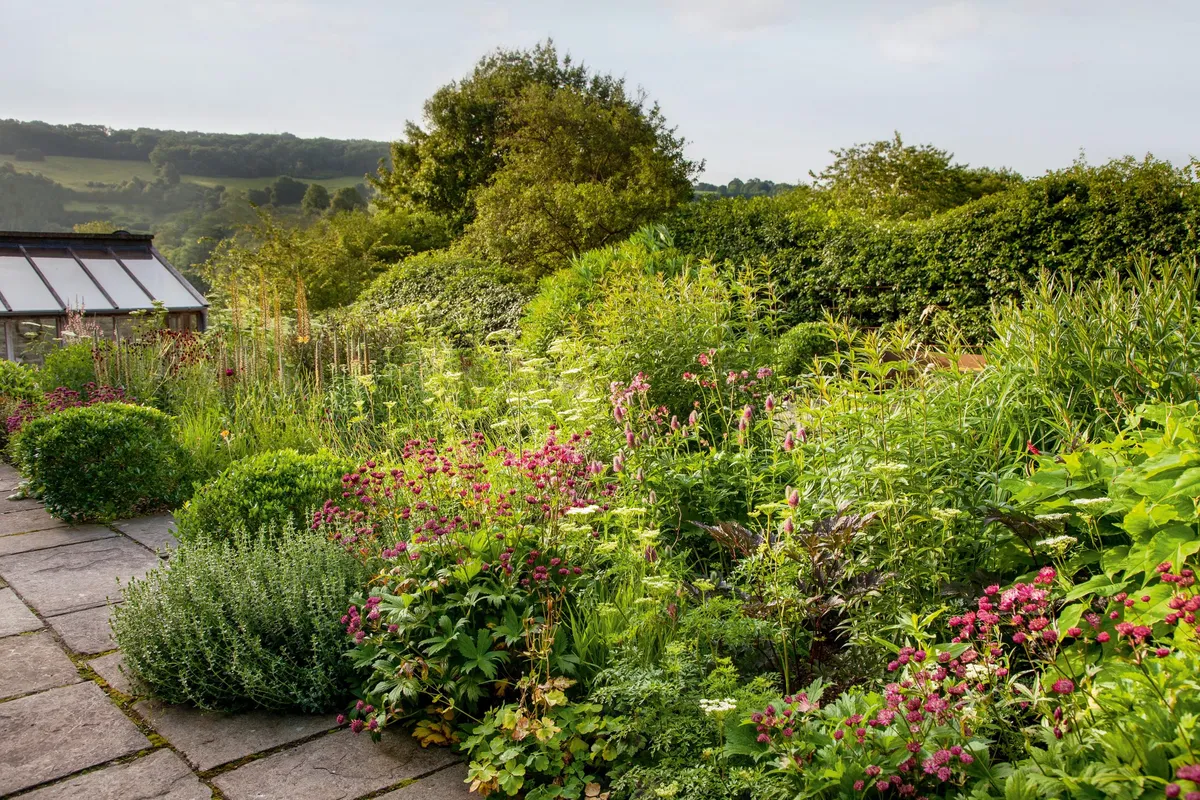
Teucrium x lucidrys, a bushy, aromatic sub shrub, and domes of Astrantia ‘Ruby Star’ mimic the loosely clipped, rounded forms of Phillyrea latifolia. Cenolophium denudatum umbels form a horizontal contrast. Spires of Eremurus x isabellinus ‘Cleopatra’ and Digitalis parviflora ‘Milk Chocolate’, help direct the gaze towards distant hills.
Find out more about Alison’s work at alisonjenkins.co.uk

